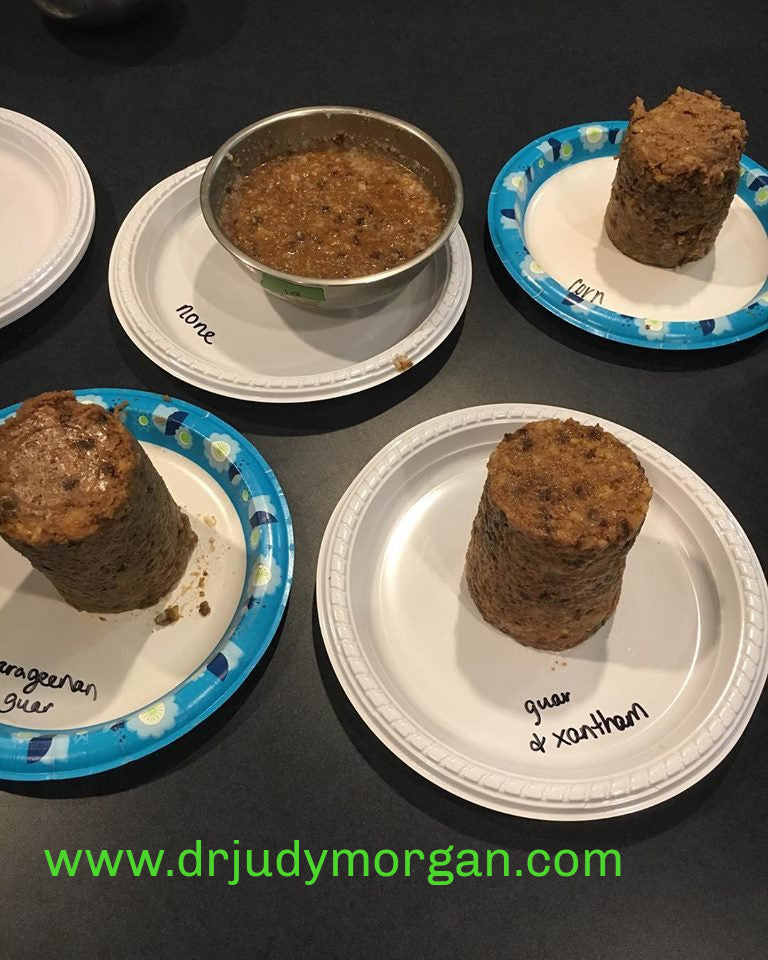This past week, the time I spent at the Kansas State University course on commercial pet food manufacturing was extremely helpful for understanding the processes involved in making complete processed pet foods. I've never been a big fan of dry kibble food, for reasons I've covered in quite a few blogs in the past. But canned food has been more intriguing, as the food is cooked at lower temperatures and the food is not subject to many of the storage and preservative issues facing dry kibble manufacturing.
We developed canned food formulations using formulation software, but all products had added natural and/or synthetic vitamin and mineral mixes added to make them complete. Formulating diets without these added nutrients has not been accomplished to date. The main problem is degradation of some vitamins during processing and storage. Some trace minerals are difficult to supply without the addition of supplements. I am faced with this dilemma even when making home-prepared formulations; at times I am forced to add supplements, although it is much easier to add non-synthetic supplements when they do not have to undergo heat processing.
In the past, consumers have had the expectation that canned foods will retain the form of the can when removed from the can (like a loaf) or in the case of chunks in gravy, will have a thick gravy to support the formula. Hue and I have been searching for a "canned" formula (aka - gently cooked, shelf stable, no or minimal added vitamin and mineral supplements) for quite some time, with little success (or none). Even the newer formulations that are being made to have broader appeal to the high-end market (and much higher price tag) are filled with starches and thickeners to deliver the formulation in a thick stew that sticks together. I've been told by manufacturers that consumers will not accept a "soupy" consistency to canned products, as they are messy. I will admit, our dogs can make a pretty big mess when their food is fed soupy. But if that food is the best for the dog, why wouldn't I be willing to clean up a little mess? (For long eared breeds, I strongly recommend putting a snood over the head to keep the ears out of the bowl.)
In our canning class we experimented with different thickeners to make gravy. Options ranged from plasma (blood product), corn meal, guar gum, carrageenan, egg whites, to xanthum gum. With just an egg product, we produced a very soupy mixture (even though rice and potatoes were included in the mix). All the others produced "loaf" style cans that stuck together when removed from the can. Some were more rubbery than others.
Much has been written about the potential carcinogenicity of carrageenan and I am certainly no fan of including that in the daily diet for my pets (or myself for that matter). If you are a label-reader, you are aware how often this ingredient shows up in processed foods in the supermarket (even some that you wouldn't think were so processed, like yogurts and almond milk).
When I polled my followers, the overwhelming response was "Let them eat soup!". However, I am aware that my followers mostly fall outside the mainstream of the pet-owning population. They are adamant about finding the most natural, wholesome, nutritious products for their pets. So, the big question: will mainstream pet owners accept "soup" instead of "loaf"?
Disclaimer: This content is for informational purposes only and is not meant to diagnose, treat, or replace consulting a primary veterinarian for individualized care.


